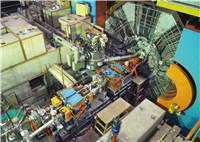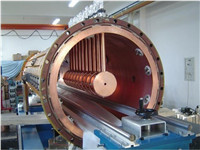Research Themes
Accelerator Technology and Science
Particle accelerators are key facilities for high energy physics experiments and multi-disciplinary research. They are also strategically significant for the national economy and public health, for example in particle therapy for cancer treatment.



IHEP has expertise in both electron and proton accelerators. The Accelerator Division successfully developed, built and ran the Beijing Electron-Positron Collider (BEPC) and its upgrade BEPCII, which is still running. Research and development for the China Spallation Neutron Source (CSNS), a high-power, high-intensity proton accelerator, is currently ongoing, with IHEP responsible for the radio-frequency quadrupoles (RFQs) in particular. IHEP is also involved in developing an Accelerator-Driven Sub-critical System (ADS), another high-power, high-intensity proton machine, which has important potential applications including nuclear waste transmutation. Looking to the future, design studies have begun for the Circular Electron Positron Collider (CEPC), a 100 km ring proposed to run at Higgs mass energy, with upgrade to a proton-proton collider at 100 TeV, which would be the highest energy ever reached by a particle accelerator.
IHEP also invests in R&D of the technologies needed for particle accelerators, such as microwave technology, vacuum technology, magnets, power supplies, cryogenic superconductivity, and beam diagnostics and control. In particular, IHEP researches superconducting technology, high-quality injectors and undulators, and has built the largest SRF laboratory in China. Together with the BEPCII cryostatic system, this constitutes a comprehensive platform for superconducting technology research.



